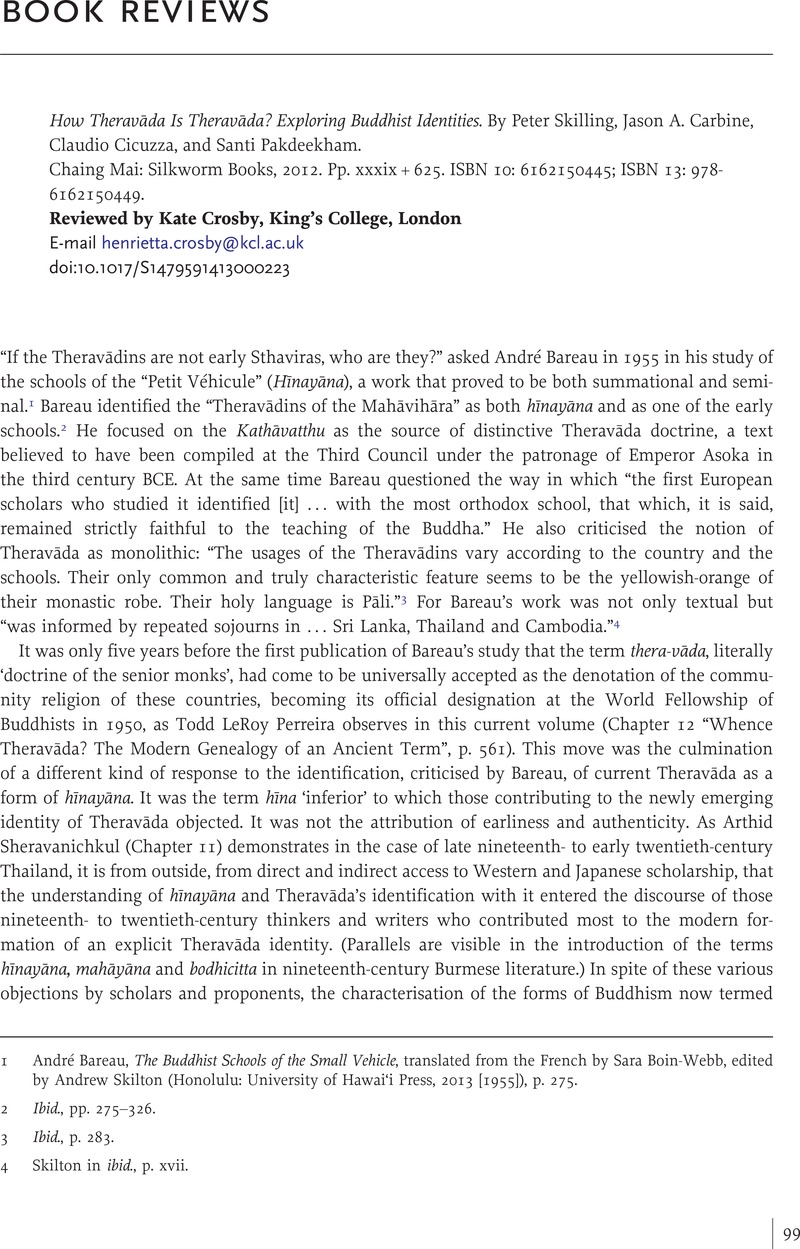No CrossRef data available.
Published online by Cambridge University Press: 09 January 2014

1 Bareau, André, The Buddhist Schools of the Small Vehicle, translated from the French by Boin-Webb, Sara, edited by Skilton, Andrew (Honolulu: University of Hawai‘i Press, 2013 [1955])Google Scholar, p. 275.
2 Ibid., pp. 275–326.
3 Ibid., p. 283.
4 Skilton in ibid., p. xvii.
5 See e.g. Crosby, Kate, Theravada Buddhism: Continuity, Diversity, and Identity (Oxford: Wiley Blackwell, 2013)Google Scholar, Chapter 9.
6 On the third council in Pali sources, see Karunadasa, Y., The Theravāda Abhidhamma. Its Inquiry into the Nature of Conditioned Reality (Hong Kong: Centre of Buddhist Studies, The University of Hong Kong, 2010)Google Scholar, Appendix.
7 On the development of sīmā literature and performance in Burma, see also Nagasena Bhikkhu, “The Monastic Boundary (Sīmā) in Burmese Buddhism: Authority, Purity and Validity in Historical and Modern Contexts,” Ph.D. thesis, School of Oriental and African Studies, London, 2013.
8 Collins, Steven, Nirvana and Other Buddhist Felicities: Utopias of the Pali Imaginaire (Cambridge: Cambridge University Press, 1998)CrossRefGoogle Scholar.